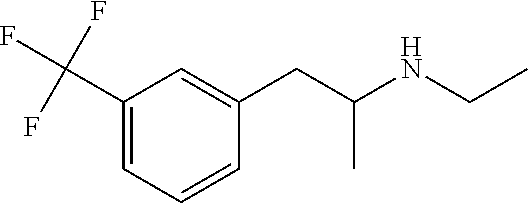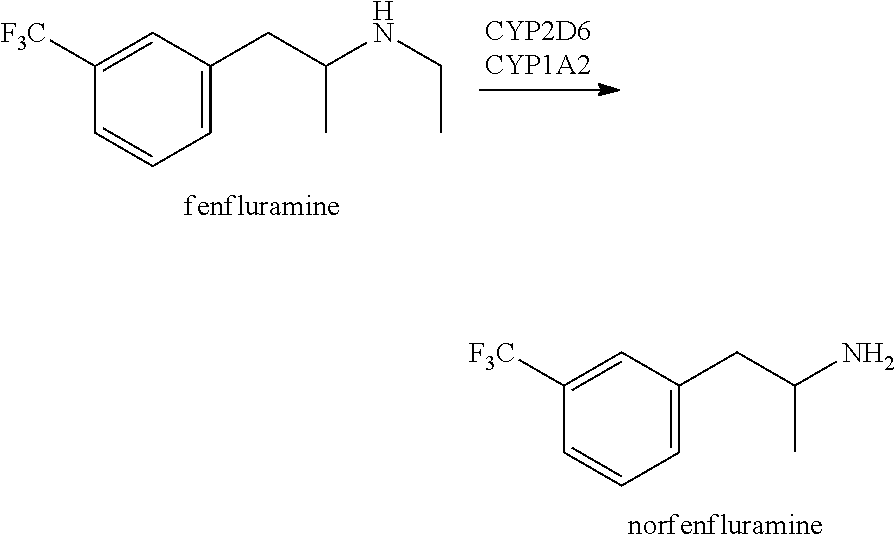Methods of treating rett syndrome using fenfluramine
a technology of fenfluramine and rett syndrome, which is applied in the field of human patient treatment, can solve the problems of withdrawn from the us and global market, sorely needed treatment options, and the efficacy of fenfluramine, and achieve the effects of preventing, preventing and/or ameliorating behavior and mood disorders, preventing and/or reducing aggression or self-injurious behaviors, and reducing the risk of side effects
- Summary
- Abstract
- Description
- Claims
- Application Information
AI Technical Summary
Benefits of technology
Problems solved by technology
Method used
Image
Examples
example 1
Add-on Therapy with Low Dose Fenfluramine (FFA) in Rett
[0242]The efficacy of fenfluramine as an add-on treatment in Rett patients is studied in an Investigator Initiated Study. The study design and protocol are described here.
Trial Objectives and Design
[0243]Design:
[0244]Open-Label Design:
[0245]Baseline Period (4 weeks): baseline seizure activity based on recordings of daily seizure activity entered into a diary.
[0246]Inclusions will be stratified by age group (≥4 to 10 years, >10 to 18 years) to ensure at least 30% of subjects will be in the group ≥4 to 10 years.
[0247]Titration Period (6 weeks): in 2-weeks increments starting with 0.2 mg / kg / day, then 0.5 mg / kg / day, and finally 0.8 mg / kg / day.
[0248]Maintenance Period (12 weeks): After completion of the Maintenance Period, eligible subjects will be offered enrollment in a separate open-label extension trial. Subjects who do not enroll in the open-label extension study will undergo a taper-off of study medication (doses will be adminis...
PUM
| Property | Measurement | Unit |
|---|---|---|
| Fraction | aaaaa | aaaaa |
| Mass | aaaaa | aaaaa |
| Mass | aaaaa | aaaaa |
Abstract
Description
Claims
Application Information
 Login to View More
Login to View More - R&D
- Intellectual Property
- Life Sciences
- Materials
- Tech Scout
- Unparalleled Data Quality
- Higher Quality Content
- 60% Fewer Hallucinations
Browse by: Latest US Patents, China's latest patents, Technical Efficacy Thesaurus, Application Domain, Technology Topic, Popular Technical Reports.
© 2025 PatSnap. All rights reserved.Legal|Privacy policy|Modern Slavery Act Transparency Statement|Sitemap|About US| Contact US: help@patsnap.com


